Could a new wellness gesture be taking over our bathrooms? It could well be that herbal bath tea is among new rituals for stressed city-dwellers. Since the global lockdown, a term hitherto unknown has indeed appeared, especially on social networks: the "herbal bath tea", which could be rendered as an infusion or tea for the bath. Tea in the bath, really? Not quite…
Preparing a bath with herbs or a herbal bath tea is buying a head start on a restorative night and, above all, carving out time for oneself to clear the mind after a stressful day. We explain how to look after body and mind using this herbal or flower bath tea.
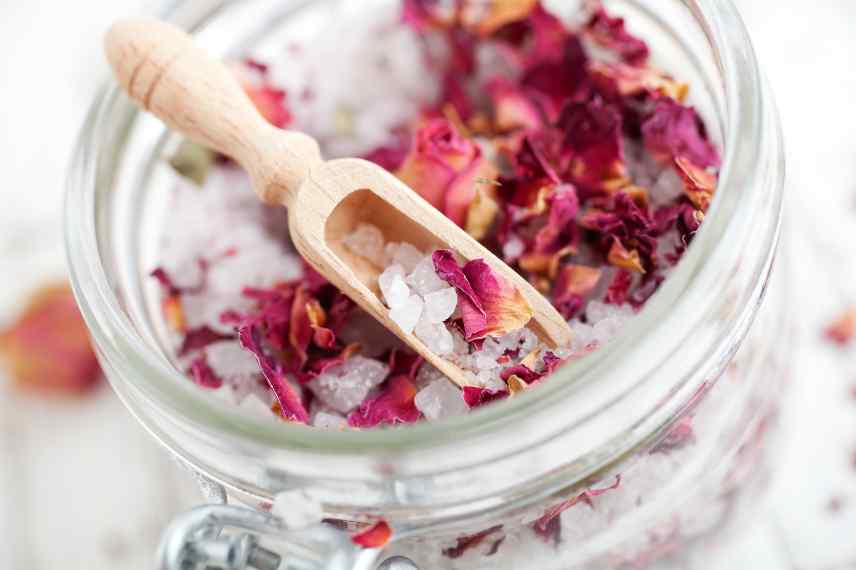
What is a bath tea?
Good for body and soul, bathing has today almost become a luxury. But when one still has a bathtub at home, it can be tempting to adopt this fashionable little ritual. Compound only of natural ingredients, bath tea releases active ingredients into hot water at the end of the day. But it is by no means a question of taking an afternoon cup of tea in the bath, still less of infusing drinking tea in the tub!
When referring to herbal or flower bath tea, we actually mean an aromatic blend of herbs and flowers, often combined with a dry base, usually salt, but which can be replaced by oats flakes or powdered milks for extra softness. The mixture is placed in a small pouch that is infused, like a tea, in the hot bath water.
This evening ritual reminds me of the Japanese bathing tradition, which is not practised as an act of cleansing but rather as a moment of relaxation and unwinding, both physical and mental. Although in Japan, very hot water is the only element in the ofuro used to relieve tension.
This aromatic bath combining heat with the benefits of plants promotes muscle relaxation and improves sleep. The herbal bath is therefore a very natural pause to allow complete relaxation, to soothe mind and daily stress, provided one of course has a bathtub.
Ingredients to obtain
The "dry" base is most often made of salt, long recognised for its properties, but one can also use oats flakes roughly ground to powder in a blender for their emollient properties, or a quality powdered milk (such as powdered coconut milk from an organic shop) for a more hydrating bath approach. You can omit the base if you do not have one to hand and make a bath with just aromatic herbs.
- Epsom salt (magnesium sulfate, also called English salt or formerly Sedlitz salt) is available from pharmacies, parapharmacies and health-food shops. It is not table salt, although it looks similar, but a mineral. It consists of sulfate (the mineral form of sulphur) and bioavailable magnesium, and is known for its relaxing properties. Used by sportspeople, it is said to act as a muscle relaxant.
Coarse sea salt can quite well replace it in this dry base: 100% natural, harvested during summer in the salt pans of France's salt marshes, it is rich in mineral salts and trace elements and has remineralising properties.
My view: Dead Sea salts or Himalayan pink salt have been very trendy in recent years and are sometimes used, but they are not really superior to the two mentioned here. Prefer a good grey IGP French salt or Epsom salt, which are also much more affordable per kilo. - Herbs and flowers: for the blend, choose what pleases you and take a walk in the garden to find it. Depending on the season, gather different fragrances from foliage or flowers known for their soothing or relaxing properties: rosemary, eucalyptus, Roman chamomile (Chamaemelum nobile), flowers and foliage of lavender, rosebuds or petals (ideally Rosa gallica or Rosa centifolia), mallow flowers (Malva sylvestris), calendula flowers (Calendula officinalis), cornflower, lime blossom or hop, lemon verbena, jasmine are among the most interesting.
- Use fine cotton muslin bags or linen (always a natural fibre), large size (make your own or order online), or reusable or disposable tea bags. Soak them in the bath water. They stop petals and other herbs sticking to the sides of the bathtub. Failing that, a nylon stocking or a very fine sock makes a good substitute.
- A string or cord to tie the aromatic sachet.
- A glass jar to store sachets if preparing several at once.
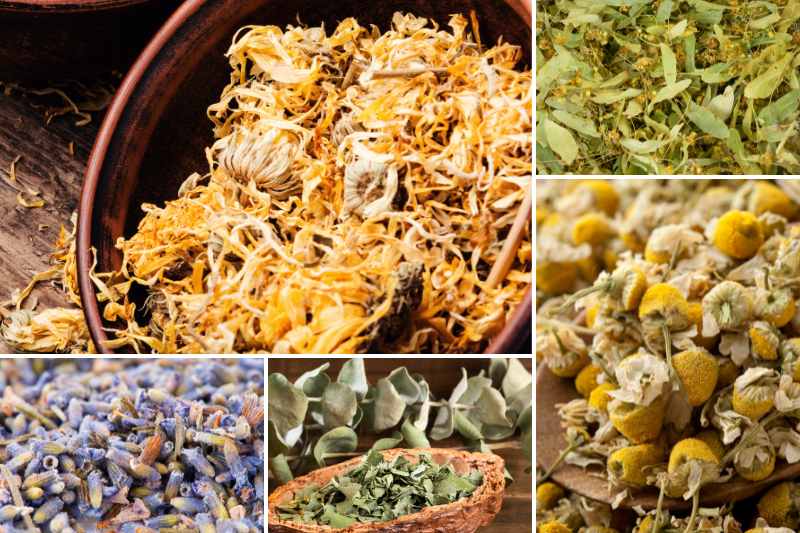
Herbal bath preparation (for 2 baths)
- 50 g coarse salt or Epsom salt (or a mix of salt and oats flakes)
- 2 handfuls dried flowers or leaves of your choice (calendula, verbena, rosemary, hop ...)
- 2 drops essential oil (facultative)
- Dry herbs and/or flowers: all petals and leaves should be dried before joining salt (or oats flakes, or powdered milk). Spread them on a clean cloth at room temperature during warm summer days and hang foliage and lavender. After about a week, plants will be dry.
- Mix salt, flower petals and/or dried leaves in a small bowl. Do not multiply plants; two or three are enough (for example: lavender + rosemary or jasmine + rose + mallow).
- Optionally, add a few drops of essential oil of your choice to intensify plants' effects in the bath and for an olfactory journey in your bathtub! Choose oils according to relaxing, emollient, toning or revitalising properties. For example, balsam fir essential oil (Abies balsamea) for relaxing properties and joint comfort, peppermint or eucalyptus to stimulate circulation, geranium to soothe skin, etc.
- For a bath on cold winter days, head to the kitchen and add spicy notes (cloves, cinnamon stick, star anise, orange peel to dry…)
- Store your bath mix in the muslin pouches you have prepared, keeping them in a pretty airtight glass jar. Place in a cupboard to use at will. Do not hesitate to make batches during summer to give as personalised gifts to acquaintances who have a bathtub.
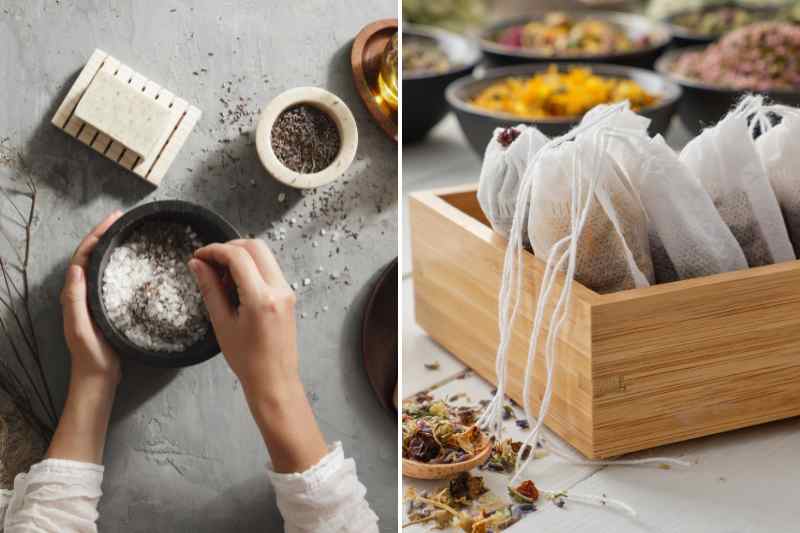
How to use?
Run fairly hot water, ideally 37°C (in Japan, traditional evening baths — unperfumed — are at around 40–50°C to promote muscle relaxation!). Submerge the sachet in the bath water or attach it under the tap while the bathtub fills. Let steep five minutes, squeeze the sachet a little under the water, then enjoy all benefits of this bath tea as you step into the tub (leaving the sachet in for the duration of the bath).
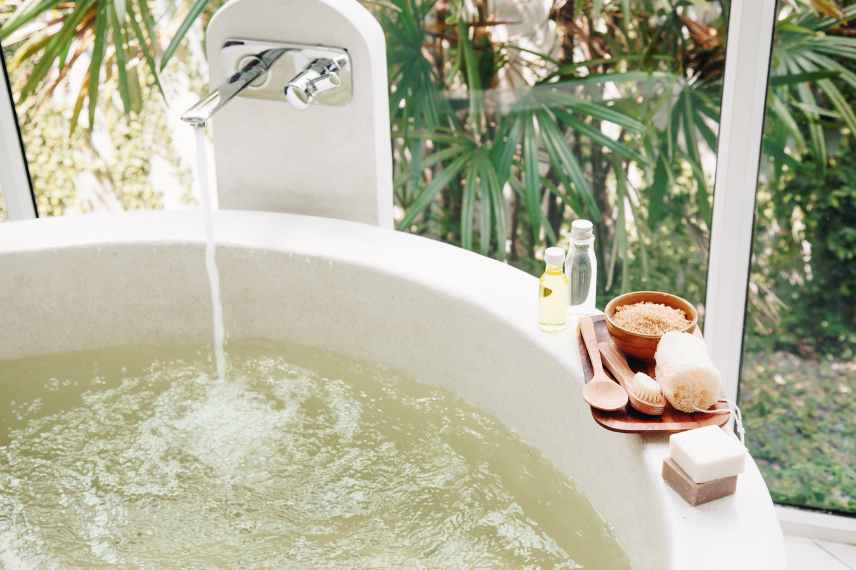
N.B.: pregnant women should check use of certain plants that may need to be avoided.
Even though baths have fallen out of favour in many homes, with showers preferred — understandable for ecological and energy reasons — you can still use this preparation for a completely natural footbath, acting as a soothing and relaxing treatment for the whole plantar arch (for this use prefer coarse sea salt and bicarbonate of soda).
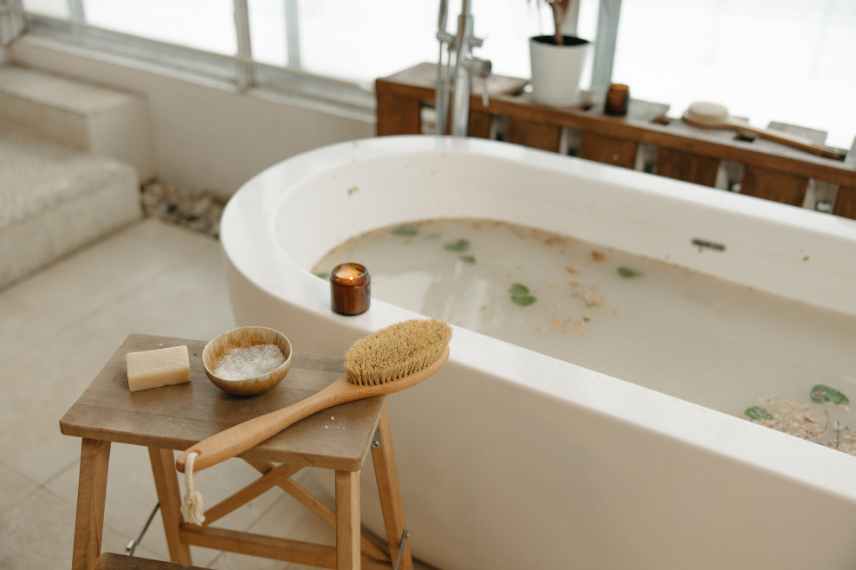































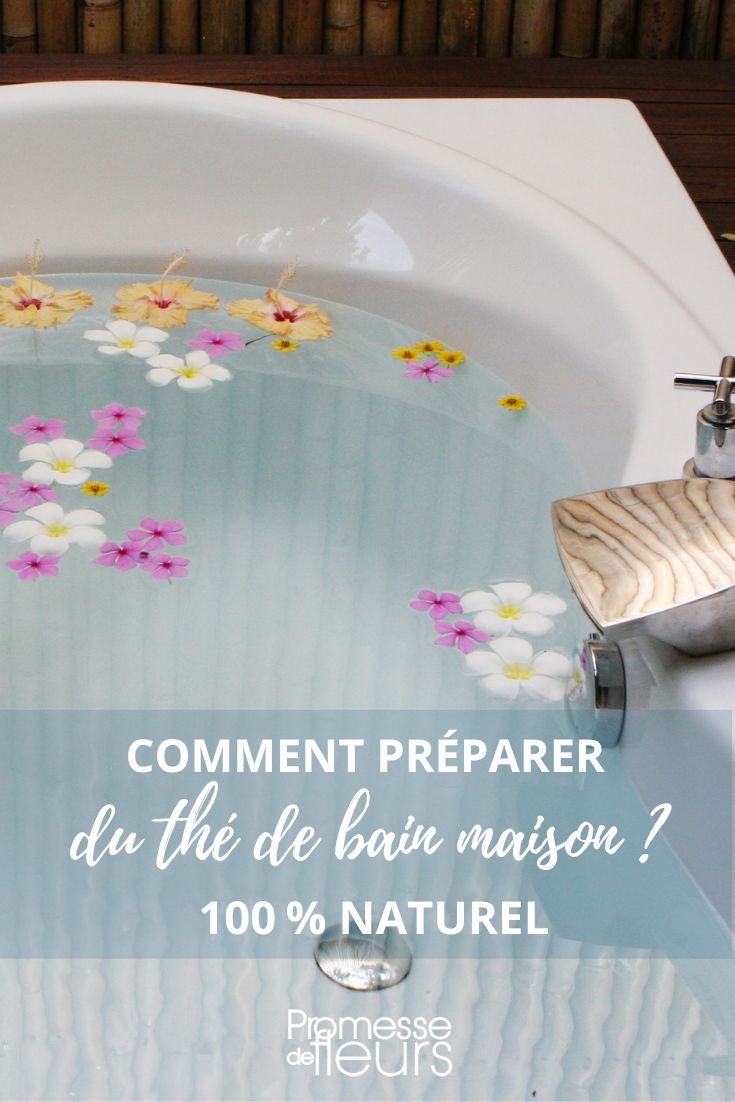
Comments